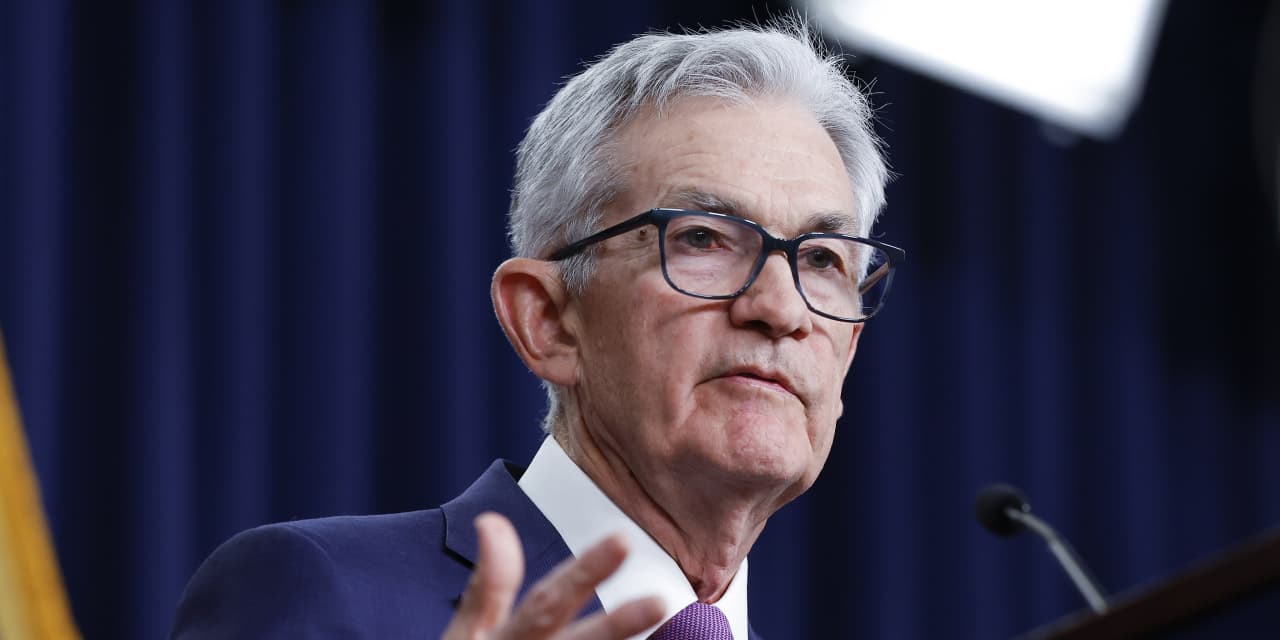Federal Reserve officials need to see more evidence that inflation is trending lower before they move to reduce interest rates, minutes from the central bank’s latest meeting state. Policymakers don’t expect rates to go higher in this economic cycle, but nor are they ready to cut.
Stock indexes dipped after the minutes were published at 2 p.m. ET on Wednesday, with the S&P 500 down 0.5%. Bond yields rose slightly: The two-year U.S. Treasury note yield was up 0.04 percentage point, to 4.66%.
The minutes reflect the proceedings of the Jan. 30-31 Federal Open Market Committee meeting. Subsequently, inflation data for January came in higher than expected, after decelerating for most of the past year.
“Participants judged that the policy rate was likely at its peak for this tightening cycle,” the minutes read. “Participants generally noted that they did not expect it would be appropriate to reduce the target range for the federal funds rate until they had gained greater confidence that inflation was moving sustainably toward 2 percent.”
Officials held the federal-funds-rate target range steady at 5.25% to 5.50%.
Fed officials also began thinking about thinking about a potential slowing of the pace of reductions to the central bank’s holdings of Treasury debt and mortgage-backed securities. The Fed is currently scaling back its balance sheet at the pace of $60 billion a month for Treasuries and $35 billion for mortgage-backed securities.
“Many participants suggested that it would be appropriate to begin in-depth discussions of balance sheet issues at the Committee’s next meeting to guide an eventual decision to slow the pace of runoff,” according to the minutes.
A potential slowing of the Fed’s balance-sheet runoff won’t be linked to a decision on interest-rate decreases. The minutes state that a few officials noted that tapering could continue even after the FOMC begins to reduce its fed-funds rate target.
The minutes echo the message sent by Fed Chair Jerome Powell at his postmeeting press conference on Jan. 31: The next move in interest rates will be down, but the Fed will first require stronger evidence that inflation is heading sustainably lower.
“Ultimately, the way I read these minutes is that rate cuts are still coming, they’re just starting later this year,” says Paul Mielczarski, head of macro strategy at investment manager Brandywine Global. “But the case for starting to ease rates is still quite strong…The economy doesn’t need to be weak for the Fed to cut rates. They just need to see sufficient evidence that inflation is moving toward the [2% annual] target.”
Consumer inflation data for January, released on Feb. 13, didn’t play along, making the Fed’s caution appear prudent. The core consumer price index, which excludes volatile food and energy prices, rose by a higher-than-expected 0.4% last month to bring the 12-month gain to 3.9%—matching the December change. January producer inflation data similarly topped expectations.
Traders have scaled back their bets on near-term rate cuts significantly since the start of 2024. They now expect the first rate cut to come in June, not March, based on interest-rate futures pricing.
Fed officials are biased toward a wait-and-see approach to lowering interest rates. The strength of the U.S. economy and stickiness of inflation have humbled many professional forecasters in the past few years, and policymakers aren’t rushing to make conclusions.
“Most participants noted the risks of moving too quickly to ease the stance of policy and emphasized the importance of carefully assessing incoming data in judging whether inflation is moving down sustainably to 2 percent,” the minutes stated.
The next FOMC meeting is scheduled for March 19-20, when February labor-market and inflation data will also be available.
In January, officials saw a strong labor market but with signs of tightness easing, including a declining ratio of job openings to unemployed workers. They expected inflation to continue to decelerate, but noted there were risks to the upside and that the path ahead was uncertain.
Write to Nicholas Jasinski at [email protected]
Read the full article here




